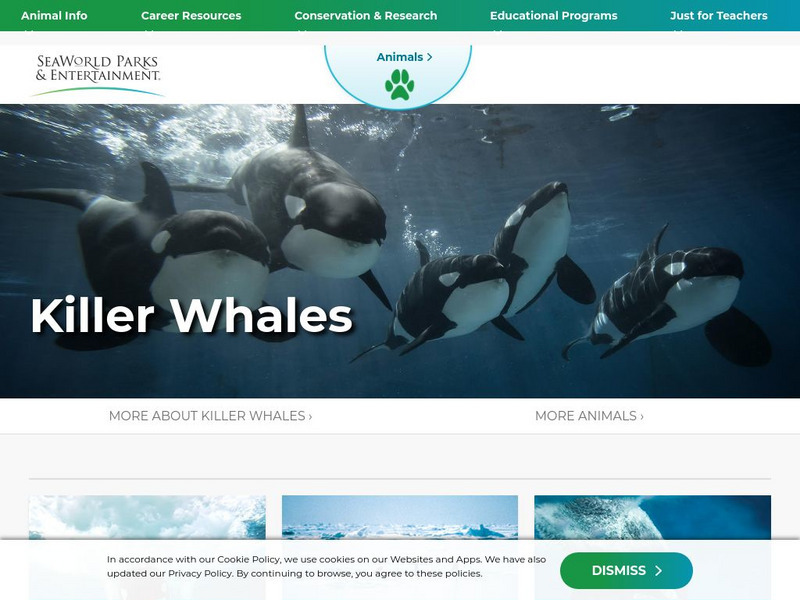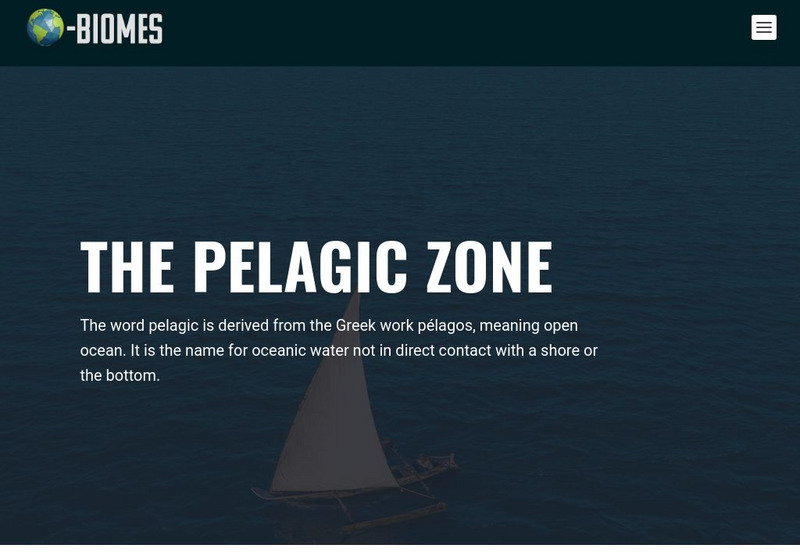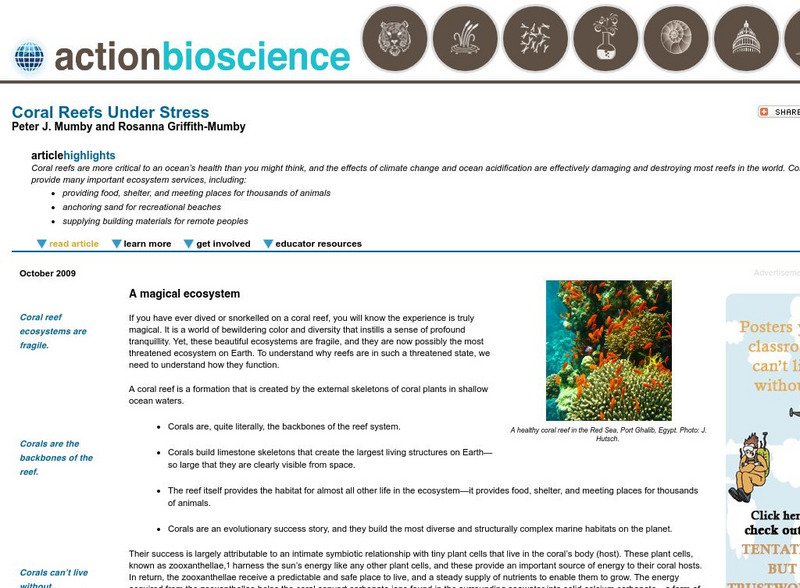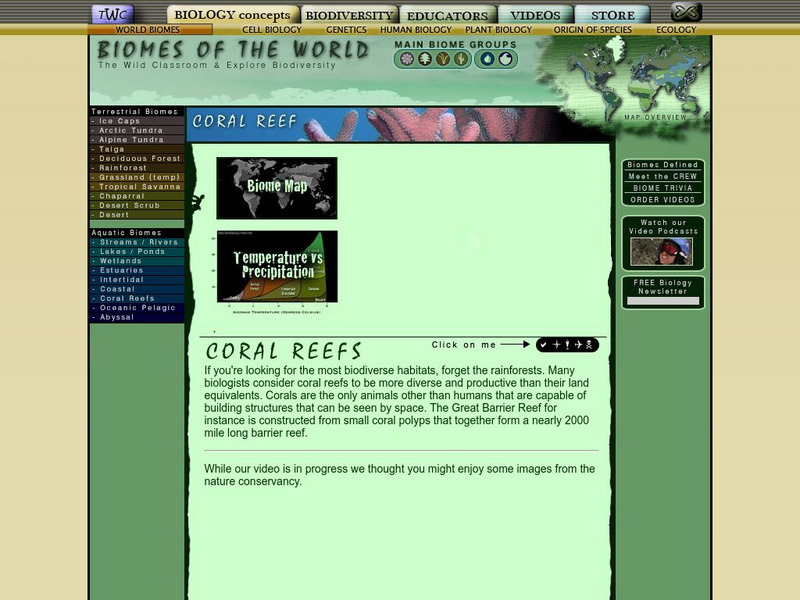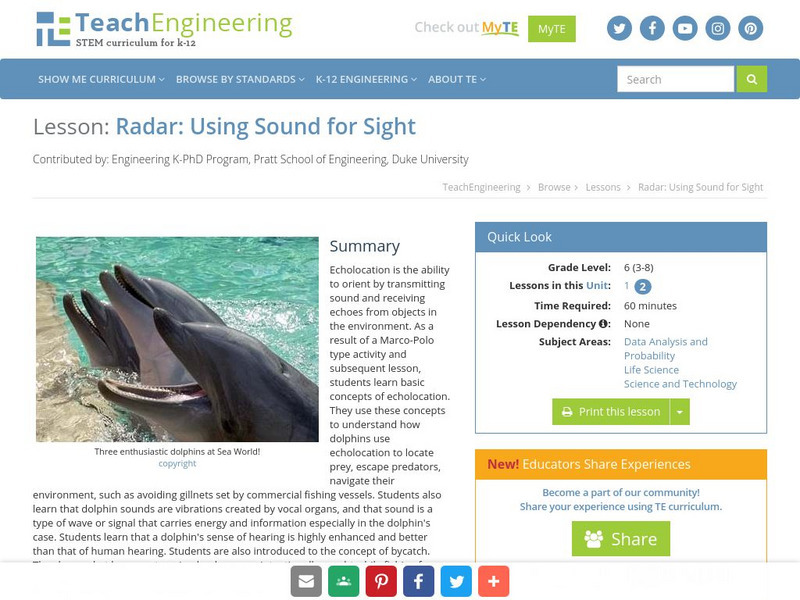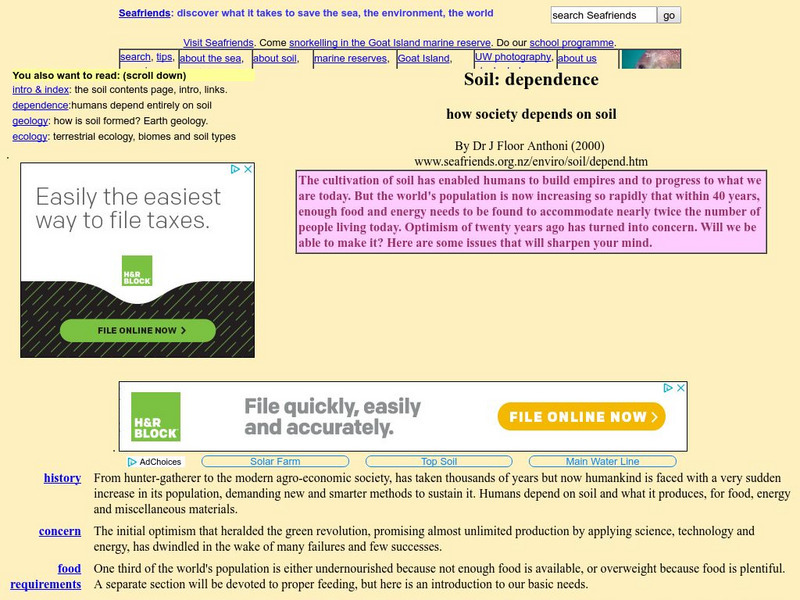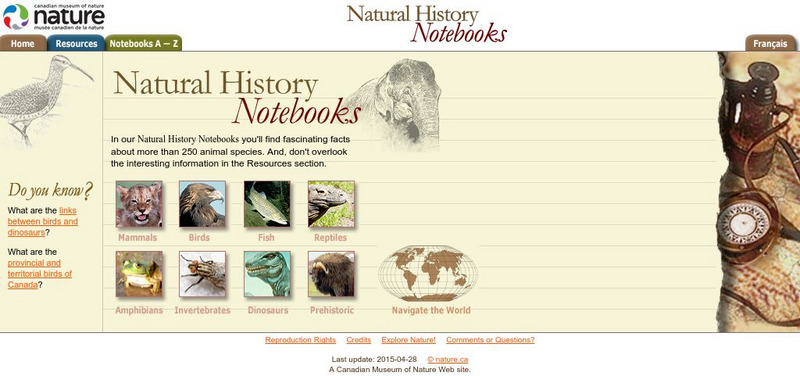Sea World Parks & Entertainment
Sea World: Killer Whales
Outlines the characteristics of the killer whale, including classification, habitat, behaviors, and conservation. Helps students identify with whales with a list of "Books for Young Readers." Information at a level of upper intermediate...
PBS
Pbs Nova: Explore the Galapagos
Using the interactive, multimedia map, see the Islands as they exist today and learn how they inspired Darwin, who pointed to them as the "origin of all my views." You can trace the trip of Darwin and hear from biologists at each spot....
The Wild Classroom
The Wild Classroom: Biomes of the World: Intertidal Zone
Learn about the intertidal ecosystem. Find out about plants, animals, adaptations, and conservation efforts.
The Wild Classroom
The Wild Classroom: Biomes of the World: Oceanic Pelagic Biome
Learn about the oceanic pelagic ecosystem. Find out about plants, animals, adaptations, and conservation efforts.
Sea World Parks & Entertainment
Sea World: Career Resources
Site sponsored by Seaworld and Busch Gardens discusses what it's like to work with animals at their parks as well as zoo careers in general.
American Institute of Biological Sciences
Action Bioscience: Coral Reefs Under Stress
Coral reefs, home to many vibrant plants and animals, are suffering from the affects of climate change and the increase of acid in ocean waters. Delve into the benefits and concerns of these beautiful ecosystems.
The Association of the British Pharmaceutical Industry
Abpi: Human and Animal Habitats
An interactive learning game where students answer whether or not certain environments would be suitable for different animals. Printable worksheets are available for review at the end of the activity.
Science Buddies
Science Buddies: Home Sweet Biome: How Do Plants Grow in Different Environments?
In this science fair project you will learn about biomes and how different climatic conditions affect plant growth. This can explain why some plants and animals are similar in different areas of the country, and in other parts they are not.
The Wild Classroom
The Wild Classroom: Biomes of the World: Coral Reef Biome
Learn about the coral reef ecosystem. Find out about plants, animals, adaptations, and conservation efforts.
Sea World Parks & Entertainment
Sea World: Animal Training: Animal Behavior & Learning
Details how marine mammals at Sea World learn by different techniques, including operant conditioning, positive reinforcer, and others.
Quia
Quia: Animal Facts Scavenger Hunt
At this website you are given ten questions to answer and links to three websites where you can find those answers.
Kinder Art
Kinder Art: Construct an Artquarium (Lesson Plan)
This lesson plan gives students a chance to create their own underwater animal out of paper-mache, and their imagination. Provides a colorful photo example, assessment criteria, and a suggested book to use for inspiration.
Missouri Botanical Garden
Missouri Botanical Garden: Ocean Animals: Mollusks
The Missouri Botanical Garden describes the characteristics and natural history of mollusks in text and color photography.
San Diego Zoo Global
San Diego Zoo: Sea Lion
This resource provides detailed information about the sea lion, as well as several pictures and an audio clip. [1:34]
Sea World Parks & Entertainment
Sea World: Manatees
Outlines the characteristics of the manatee, including classification, habitat, behaviors, and conservation. Helps students identify with manatees with a list of "Books for Young Readers." Information at a level of upper intermediate or...
Museums Victoria
Museum Victoria Prehistoric Life: Sea Stars
This site explores the fossilized remains of sea stars found in Southern Australia. Content includes a look at the physical characteristics of these animals.
Kidport
Some Animals Live in Rock Caves
This site has brief illustrations and sample locations as to where the tiger, the bear, the moray eel and bat live.
Other
Discovery of Sound in the Sea
Discover how animals use sound to communicate. Provides links to the uses of sound, effects of sound as well as sound production and reception.
Other
Voyage to the Deep: Tubeworm
This is a very brief overview of tubeworms, a hydrothermal vent marine animal.
Chicago Zoological Society
Chicago Zoological Society: Zoo Explorer: California Sea Lion
Get acquainted with the California sea lion while browsing this animal guide from the Brookfield Zoo. Subject matter includes quick facts, a photo, and highlights on the appearance, habit, and other unique characteristics of this marine...
TeachEngineering
Teach Engineering: Sound for Sight
Echolocation is the ability to orient by transmitting sound and receiving echoes from objects in the environment. As a result of a Marco-Polo type activity and subsequent instructional activity, students learn basic concepts of...
Kidport
Kidport: Who Eats What?
At this site students are encouraged to try and answer questions that relate to what animals eat. At the bottom of the web page are beautiful pictures of land and sea animals and when selected, students will be able to read short facts...
Other
Seafriends: Soil Dependence
This website looks at our dependence on soil and what it produces. It includes text, graphs, charts, illustrations and important statistics. Hosted by the Seafriends Marine Conservation and Education Center.
Canadian Museum of Nature
Canadian Museum of Nature: Natural History Notebooks
This site from the Canadian Museum of Nature, a natural history museum, provides short information blurbs and fun facts on over 240 different common animals categorized by type (mammals, fish, reptiles, invertebrates, amphibians,...
Other popular searches
- Marine Animal
- Marine Animal Reproduction
- Marine Animal Taxonomy Game
- Marine Animal Games
- Marine Animal Adaptations
- Marine Animal Classification
